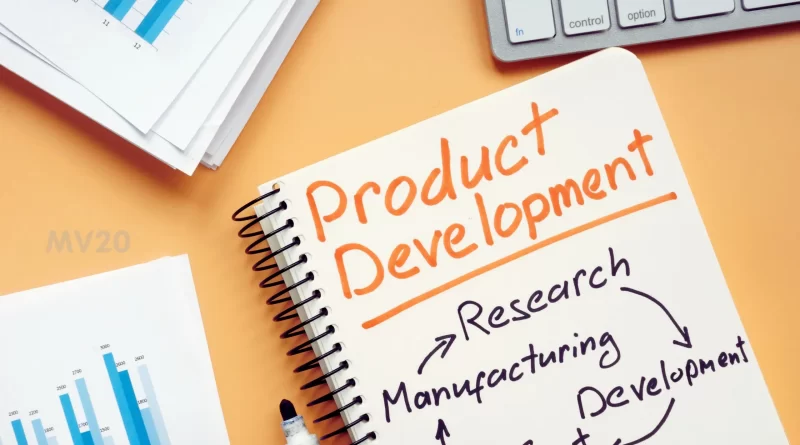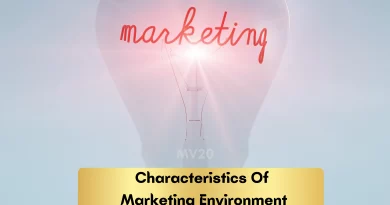New Product Development Process In Marketing [Explained With Example]
As a marketer, one of the most exciting things you can do is bring a new product to market. But, the process of developing a new product can be daunting, especially if you’re not familiar with the ins and outs of product development.
In this article, I will guide you with the new product development process and explore all the key steps you need to take to bring a new product to market successfully.
New Product Development Process
Step 1: Idea Generation
The first step in the new product development process is generating ideas. This is where you brainstorm and come up with new product concepts that you think will be a hit with your target market. The key to successful idea generation is to think outside the box and consider all possibilities.
For example, if you’re a fashion brand, don’t just think about new clothing items. Consider new accessories, new materials, new technologies, and new ways to personalize your products.
Also, don’t be afraid to get inspiration from other industries. Who says you can’t make a phone case that also works as a wallet or a shirt that also works as a mask?
Step 2: Idea Screening
Once you’ve generated a list of ideas, it’s time to screen them to see which ones have the most potential. During this step, you’ll evaluate each idea based on a set of criteria, such as market potential, feasibility, and alignment with your company’s mission and values.
It’s also very important to consider the amount of time, money and resources it will take to bring each product idea to market.
This step is crucial as it will help you narrow down your list of ideas and focus on the ones that have the most potential for success.
Step 3: Concept Development and Testing
After you’ve narrowed down your list of ideas, it’s time to develop a concept for each of the top ideas. A concept is a detailed description of the product, including its features, benefits, target market, and pricing.
Once you’ve developed a concept, it’s time to test it with your target market. This can be done through surveys, focus groups, or even a prototype of the product. The goal of this step is to gather feedback on the concept and make any necessary adjustments before moving on to the next step.
Step 4: Business Analysis
After you’ve tested the concept and made any necessary adjustments, it’s time to analyze the business potential of the product.
This includes conducting market research to determine the size of the potential market and the competition, as well as creating financial projections to determine the potential profitability of the product.
It’s necessary to be realistic during this step and consider all the potential risks and challenges that may arise. Avoid being caught off guard by doing some advance planning.
Step 5: Product Development
Once you’ve determined that the product has a good chance of success, it’s time to start developing it. This includes designing the product, sourcing materials and components, and testing the product to ensure it meets all necessary standards and regulations.
You must work closely with engineers, designers, and other experts during this step to ensure the product is developed to the highest standards.
Step 6: Test Marketing
Before launching the product, it’s a good idea to conduct a test marketing. This is where a small-scale launch of the product is conducted in a limited geographic area to test consumer reactions, gather feedback, and make any necessary adjustments before the full launch.
Step 7: Commercialization
If the test marketing is successful, it’s time to launch the product to the market. This includes creating a marketing plan, setting a launch date, and promoting the product to your target market.
This step also includes creating packaging and labeling for the product, as well as setting a price point.
During commercialization, you should work closely with sales and distribution teams to ensure the product is reaching the right audience and is being sold at the right price.
New Product Development Process Example
Let’s take the example of a new line of eco-friendly cleaning products.
Idea Generation
The marketing team brainstormed ideas for new products and came up with the concept of creating a line of eco-friendly cleaning products.
Idea Screening
The team evaluated the idea based on market potential, feasibility, and alignment with the company’s mission to be more sustainable. They also considered the resources and budget required to develop the product line.
Concept Development and Testing
The team developed a concept for the eco-friendly cleaning product line, including the specific products that would be included, their features and benefits, and the target market. They then conducted focus groups with potential customers to gather feedback on the concept.
Business Analysis
The team conducted market research to determine the size of the potential market for eco-friendly cleaning products and the level of competition. They also created financial projections to determine the potential profitability of the product line.
Product Development
The team worked with engineers and designers to develop the eco-friendly cleaning products, sourcing materials and components that were sustainable and meeting all necessary standards and regulations.
Test Marketing
The team conducted a test launch of the product line in a limited geographic area to gather feedback and make any necessary adjustments before the full launch.
Commercialization
Based on the success of the test launch, the team created a marketing plan, set a launch date, and promoted the eco-friendly cleaning product line to their target market. They also created packaging and labeling for the products and set a price point.
Throughout this process, the team made sure to consider all the possible risks, challenges and opportunities that may arise. And by doing so, they were able to successfully launch a new line of eco-friendly cleaning products that resonated with their target market and was profitable for the company.
Final Thoughts on Product Development Process!
For sure, bringing a new product to market is a thrilling and challenging process. By following the steps outlined in this article, you can increase your chances of success and bring a product to market that meets the needs of your target market and is profitable for your company.
Remember, the key to success is to think outside the box, gather feedback from your target market, and be realistic about the potential risks and challenges. And don’t forget to have fun with the development process. After all, it’s not every day you get to bring a new product to market.
Best of luck on your new product development journey!
Further reading: 4 stages of product life cycle




